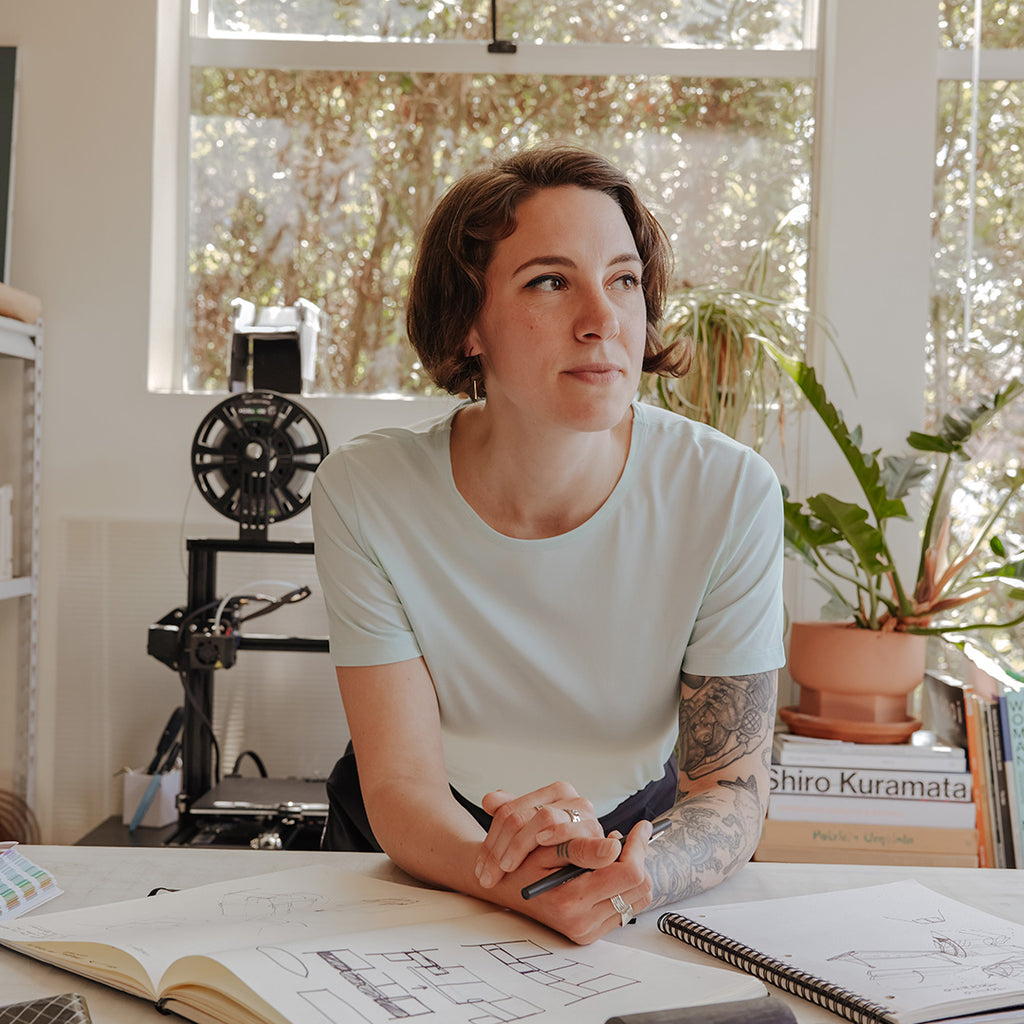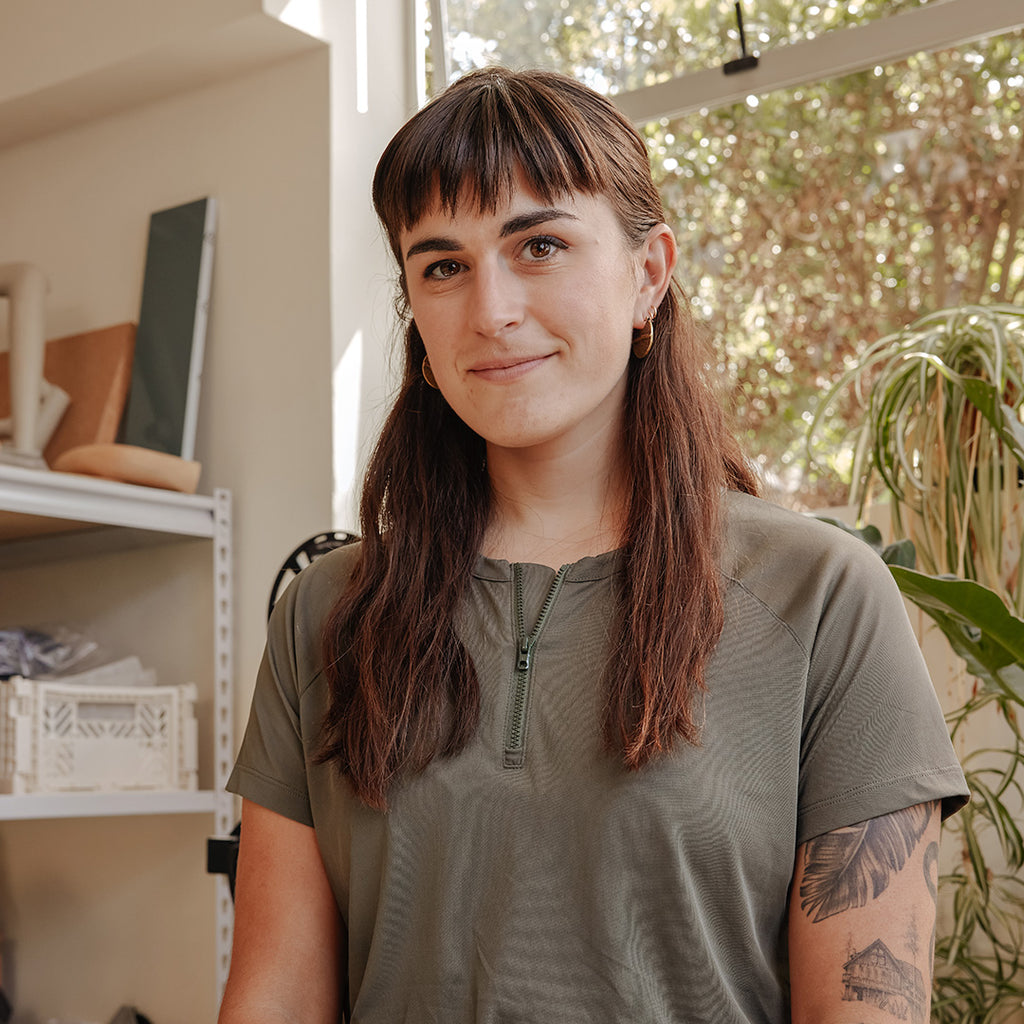Industrial designers Lauryn Menard and Baillie Mishler are on a mission: help others make better, more conscious design choices to improve the world, the people in it and the planet we’re living on.
They do this in their work with PROWL , a multidisciplinary design studio in Oakland, California that Menard founded in 2021. PROWL offers consulting for clients who want to have a positive impact in the world with the main focus being on fostering environmental and human health through the lens of material.
This is a familiar concept at LifeLabs and one we not only share but hope to see catching on in the overlapping sectors of science, sustainability and design. We reached out to Menard and Mishler to learn more about their approach to circularity, why the term ‘regenerative’ is more timely than ‘sustainable’ and how consumers can support the shift to more thoughtful, earth-friendly goods.
On starting PROWL
The impetus behind PROWL, says Menard, is to address the new market demand.
“Because more consumers are informed and knowledgeable, they’re asking for more from brands, which means that people are spending their dollars on companies that they think are doing right. With that comes an aha moment where companies have to adjust to these demands, whether through healthier materials, through strategy and how they’re telling their brand story or whether they’re completely shifting their product in order to address health needs or something else."
“Today we’re seeing a shift in the business case for circularity and regenerative materials and thinking. It’s not just an upfront investment that you’re hoping to get back, it’s a smarter way to run your business and it starts in the design process.”
On the meaning, and limitations, of circularity
A circular economy, explains Mischler, is a “model of production and consumption which involves sharing, leasing, repairing, reusing, refurbishing and recycling existing materials and products as long as possible. The hope is that you’re keeping things in the system as long as possible, instead of defaulting to our disposable habits and throwaway culture.”

Baillie Mishler of PROWL.
But it’s currently limited, she continues, by infrastructure including facilities or human power, as well as psychology, especially here in the US.
“Because we are in a more disposable culture, we don’t put value in things made of certain materials or that are branded as single use. Like, you can use a plastic cup forever, you don’t need to throw it out.”
"We are in a similar moment as we were in the industrial revolution, so it’s a matter of embracing it because the change is here.”
Menard calls circularity ‘aspirational’, because it requires a set of systems that doesn’t exist yet. But, she continues, once you get past the initial hurdles to adopting circularity, it works out better in the long run.
“Ultimately if you think in terms of circularity and regeneration, you might end up with a leaner manufacturing line. You’ll probably end up with customers who trust you more. You’ll probably end up with less intense margins and your supply chain can be more localized. Once you start thinking that way, going backwards is not going to happen. It’s not a trend. We are in a similar moment as we were in the industrial revolution, so it’s a matter of embracing it because the change is here.”

PROWL founder Lauryn Menard.
Why we should start thinking in terms of ‘regeneration’ instead of ‘sustainability’
When it comes to a sustainability approach versus a regenerative approach, Menard calls on a metaphor.
“Let’s say you're planning a party, and your party starts at 8pm. So you tell your friends to come at 8pm, but everyone shows up at 10pm because people are only going to put in so much effort. I think of sustainability as the 10 o’clock and regeneration as the 8 o’clock.”
She continues, “What are we trying to sustain right now? The world is on fire and glaciers are falling. No matter where you live on this planet, you’re feeling the effects of climate change. Because of that, we have to shift to this more idealistic future where the health of the planet and the health of its people are actually improved. If we shoot for regeneration maybe we’ll get to a sustainable future. The optimist in me thinks we will.”
On examples of how smart design can solve real problems
Both Menard and Mishler have industrial design backgrounds in furniture. Says Menard of their recent projects, “We’re working on a collaboration with a lighting company who 3D prints their products out of plant-based materials. One of our other clients is making an electrically charged camping trailer that doesn’t drain the battery of the car or your gas mileage. It’s smart in the way it functions and drives, and our part in the project is making it comfortable and thoughtful in its interior.”
They’re also working on an interactive space for Alcova in Milan Design Week that simulates the destruction of recent California wildfires, but also shows the likely future of regrowth and regeneration to come. “The name of the space is Exposure Therapy. We’re using 3-d knitted textiles that look black and destructive and show the negative side of the story, and then a regrowth green generated textile that’s more optimistic. So the viewer goes in and sees this destruction but as they leave hopefully they’re feeling more positive about where things could go.”

On how consumers can be agents in support of regenerative thinking
When asked about consumers, Menard brings up two drastically different camps that she’s noticed, particularly on social media. “There’s this culture of caring and having the purchasing power to buy things that say you care. But there’s also this other side that is Kim Kardashian obsessed and still addicted to fast fashion and these very lux ways of life. It’s interesting that both of those are happening massively at the same time.”
"Design is a universal language. People can adopt an expectation of quality."
Ultimately, she says, people who buy things are in the driver's seat. “Consumers need to be using their purchasing power wisely in the sense that they can make a decision on what not to buy."
“Design is a universal language,” Mishler adds. “People can adopt an expectation of quality.” And once they do, it creates demand for that quality from businesses.
On what businesses can do to adopt regenerative practices
In addition to incorporating circularity into the design process, pursuing sustainable supply chain practices and educating consumers, Menard says leadership is key.
“The most powerful leaders I’ve been exposed to are really honest in what they don’t know and comfortable leaning on experts who can help guide them. Does that mean contracting and consulting with more people? Yes. But, that collaborative nature is how we’re going to pull ourselves out of this.”
Follow PROWL on the web and social .
